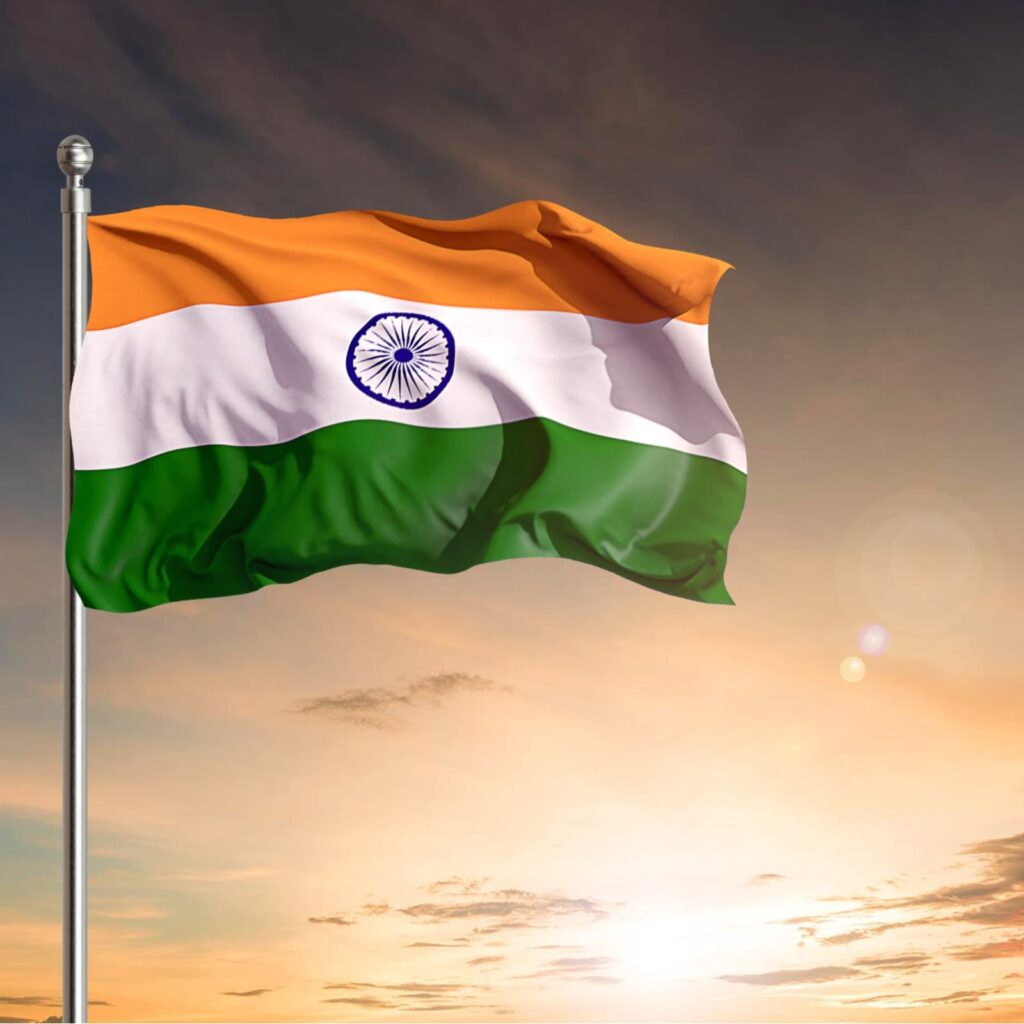History
On January 26, 1950, the Indian Constitution was formally adopted, and that event is commemorated on Republic Day. India was freed from the British Raj in 1947, but it wasn’t until January 26, 1950, that the Indian Constitution took effect, making India a sovereign state and establishing it as a republic.
1st Republic Day

Image source- india map
India attained independence from British rule on August 15, 1947, it wasn’t until January 26, 1950, that the Constitution came into effect, and India became a sovereign and a republic state.
Every year, millions of Indians witness the rich tradition, cultural heritage, spectacle of the nation’s progress and achievements, in the grand parade.
However, you might be wondering how the nation celebrated its first Republic Day in 1950.
Republic Day commemorates the implementation of the Constitution on January 26, 1950. India attained independence from British rule on August 15, 1947, and it wasn’t until January 26, 1950, that the Constitution came into effect. India became a sovereign and a republic state.
January 26 was chosen as Republic Day since it was on this day that the Indian National Congress declared ‘Purna Swaraj’, opposing the British regime’s dominion status in 1929.
In 1934, MN Roy initiated a move to draft a constitution for India and subsequently to form a Constituent Assembly.
The British Government accepted the demand in 1940. Dr BR Ambedkar was appointed as the chairman of the drafting committee of the constitution. The constitution was finally adopted by the Constituent Assembly on November 26, 1949, and that’s why November 26 is celebrated as Constitution Day.
It took 2 years, 11 months, and 17 days to form the Indian constitution. During the drafting period, 11 sessions were held that were spread over 165 days.
India celebrated its first republic day with great enthusiasm and grandeur whose preparations began weeks ago. Dr Rajendra Prasad was sworn in as India’s first president on that day. Delhi witnessed great processions by jubilant citizens, beating drums and blowing conch shells, and singing patriotic songs. Similar events were celebrated across the nation. After three years of independence, India officially became a sovereign, democratic, republic with a parliamentary form of democratic government.
Importance
January 26 was selected as the date because on the same date in 1930, the Indian National Congress had revealed Purna Swaraj, the declaration of India’s independence from colonial rule. The day signifies the right spirit of independent India.
Theme
This year, the Republic Day celebration is themed around ‘Jan-Bhagidari (participation of people)’. As India celebrated 75 years of independence in 2022 as ‘Azadi ka Amrit Mahotsav’, the celebrations this year shall witness zeal, enthusiasm, patriotic fervour
India became republic in Year
India became a free nation on August 15, 1947, it declared itself a Sovereign, Democratic and Republic state with the adoption of the Constitution on January 26, 1950.
Father of Republic India

Ambedkar. He fought to give the minorities in India an equal footing as a part of the democracy. He was independent India’s first Minister of Law and Justice, the chief architect of the Constitution of India, and a founding father of the Republic of India.
1st President of India after Republic

Image source- NDTV.com
Dr Rajendra Prasad
India celebrated its first republic day with great enthusiasm and grandeur whose preparations began weeks ago. Dr Rajendra Prasad was sworn in as India’s first president on that day.
1ST Indian Flag

Image source-YahooNews Singapore
Who designed the flag of India? The design of the flag of India that was first presented in 1921 to Mahatma Gandhi, leader of the All-India Congress, was created by Pingali (or Pinglay) Venkayya.
Tiranga

Image source-News18
The national flag is popularly known as Tiranga, which means “three colours” or “tricoloured”. It is a horizontal tricolour in equal proportion of deep saffron at the top, white in the middle and green at the bottom. The ratio of the width to the length of the flag is 2:3.
Old Indian Flag

Image source-WION
NCC. The first national flag in India is said to have been hoisted on August 7, 1906, in the Parsee Bagan Square (Green Park) in Calcutta now Kolkata. The flag was composed of three horizontal strips of red, yellow and green.
Significance of Republic Day in India
The constitution of India is a huge document which lays down procedures, powers, duties, fundamental rights and directive principles of Government of India & Indian citizens. The governing principle of the Indian Constitution is “of the people, for the people and by the people”, which signifies that the power is vested in the hands of the citizens of India. Republic Day marks the celebration of the empowerment of Indian citizens to select their own government. It is a national holiday which commemorates the process of establishment of the Indian Constitution.
Celebrations on Republic Day in India

Image source- apteachers
The main Republic Day celebration is held in the national capital, New Delhi, at the Rajpath (officially named ‘Kartavya Path’), before the President of India. On this day, ceremonious parades take place at the Rajpath, which are performed as a tribute to India; its unity in diversity and rich cultural heritage.
- The Republic Day Parade is the main attraction on this day. People in Delhi attend the parade at Rajpath. Beating the cold weather, Delhites gather in huge numbers and witness the beautiful spectacle.
- The president of India hosts the National Flag and honors the brave citizens of India by presenting bravery awards – Paramvir Chakra, Vir Chakra, Ashok Chakra, Kirti Chakra and Children’s National Bravery Award.
- The Prime Minister of India pays homage to the brave souls who lost their lives in wars. He lays a wreath at Amar Jawan Jyoti at India Gate in Delhi to show respect to the martyred soldiers.
- The Republic Day Parade is led by the three divisions of the Indian Armed Forces – Navy, Air Force and the Indian Army. Besides this, there are several cultural tableau, rally of marching soldiers, military bands, aircraft shows and display of spectacular skill and daring on military vehicles.
- The schools in India have a holiday on this day, but students come to school and celebrate this national day by hoisting the National Flag, performing dances, skits and having sweets.
The Republic Day Parade is one of the most spectacular parades in the world. People from many parts of the world especially visit India during this time to witness the grandeur of the celebrations of the Republic Day in Delhi.
Beating Retreat
History
Beating Retreat is a military ceremony that dates to an order given to the army of James II of England in 1690 in the early days of organised warfare. The troops beat drums and paraded the streets to mark the end of a day of combat, as well as lowering the flags and closing the gates. The beating of drums is where the name beating retreat comes from.
Interestingly, it was originally called ‘watch setting’ because it was initiated at sunset by the firing of a single round from the evening gun.
Ceremony Today

Image source- India today
The ceremony has evolved into a colourful pageant of military music performed by military bands, impressive marches, spectacular fireworks and celebratory gunfire – an absolute must-see.The Massed Bands of the Royal Marines perform every two years and carry out the precision drill. Taking place in June, the ceremony often overlaps with the birthday of Prince Philip, the Duke of Edinburgh.Each year, a member of The Royal Family takes the salute. Prince William did so for the first time in 2014.2015 marked the 200th anniversary of The Battle of Waterloo and the ceremony featured Napoleonic Association re-enactors.The Beating Retreat is not to be confused with the Edinburgh Military Tattoo. This is a massive military ceremony televised worldwide to approximately 100 million people.
Gallantry awards and other honours given on 26 January
The Republic Day celebration is also the occasion to recognise and honour the brave personnel in the armed forces and police for their exceptional courage in the field, and also to civilians who have performed acts of valour in different situations.
There are eight separate categories of awards given to honour the recipients for their work in their respective fields. Let’s find out what the awards are, who receives them and why, and who felicitates the recipients:
Padma Awards

The highest civilian awards in the country are announced on the eve of Republic Day. Padma Awards were instituted in 1954 and are awarded to citizens of India for their distinguished contribution in various fields of activity including education, arts, literature, science, acting, social service and public affairs.
Gallantry Awards

Image source- BankExamsToday
The President honours the country’s military personnel for their show of gallantry and valour with a total of six awards — Param Vir Chakra, Mahavir Chakra, Vir Chakra, Ashoka Chakra, Kirti Chakra, Shaurya Chakra.
- Param Vir Chakra (PVC): India’s highest military decoration is awarded for displaying distinguished acts of valour during wartime. It is granted for “most conspicuous bravery in the presence of the enemy” on land, sea, or in the air.
- Mahavir Chakra (MVC): The second highest military decoration in India is awarded for acts of conspicuous gallantry in the presence of the enemy, whether on land, at sea or in the air. It replaced the British Distinguished Service Order (DSO).
- Vir Chakra (VrC): Third in precedence in wartime gallantry awards, Vir Chakra is awarded for acts of bravery on land, air, or sea.
- Ashoka Chakra: It is India’s highest peacetime military decoration awarded for valour, courageous action or self-sacrifice away from the battlefield. This award can be given to either a military or civilian personnel.
- Kirti Chakra: The medal is awarded for conspicuous gallantry otherwise than in the face of the enemy. It may be awarded to military personnel, civilian citizens, police personnel including central para-military forces and Railway Protection Force.
- Shaurya Chakra: The Chakra is awarded for gallantry otherwise than in the face of the enemy. The decoration may be awarded posthumously. It may be awarded to military personnel, civilian citizens, police personnel including central para-military forces and Railway Protection Force.
The President’s Police Medals

Image source- NewsOnAIR
The President also awards three police medals — for meritorious service, for distinguished service, and for gallantry — to law enforcement personnel in the country.
Established on 1 March 1951, the medals were originally called the President’s Police and Fire Service Medal.
The medals may be awarded to any member of a police service without regard to rank or time in service.
Recipients of the medal are granted a monthly stipend that is paid to them even in retirement, and upon the recipient’s death it continues to be paid to their surviving spouse.
The President’s Police Medal for Gallantry (PMG) is awarded for, “gallantry in saving life and property, or in preventing crime or arresting criminals”.
The President’s Police Medal for Distinguished Service (PPM) is awarded for a long and distinguished service to individuals who have served at least 21 years in the police service or in the central police and security organisations.
The Police Medal for Meritorious Service is given to police and law enforcement personnel who have stayed committed to their duties for at least 15 years.
On Tuesday, the Ministry of Home Affairs announced the list of 939 police personnel who have been awarded the medals on the 73rd Republic Day. It announced 189 Gallantry Medals, 88 Police Medals for Distinguished Service and 662 medals for Meritorious Service.
